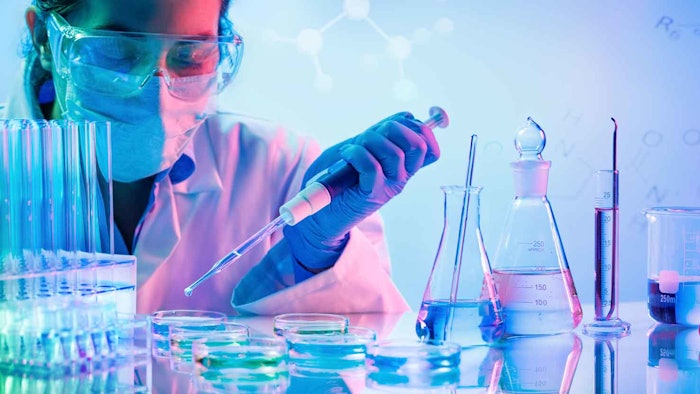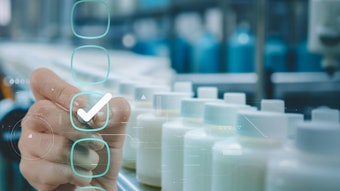
The EU's Scientific Committee on Consumer Safety (SCCS) recently released the 12th revision to its Notes of Guidance (NoG) for cosmetics and cosmetic ingredient testing; the previous revision to the NoGs took place in 2021. Per the SCCS, the NoGs are designed to direct public authorities and the cosmetic industry in order to improve harmonized compliance with the current cosmetic EU legislation.
The guides are regularly revised to incorporate the progress of scientific knowledge in general and the experience gained particularly in the field of testing and safety evaluation of cosmetic ingredients. While the guides are focused on cosmetic ingredients, some indirect guidance is given for the safety assessment of finished products as well.
Cosmetic legislation Regulation (EC) No. 1223/2009 was fully implemented in recent years, banning animal testing for cosmetics. As such, the SCCS reports it has closely followed the development and validation of alternative testing methods with an emphasis on replacement methodologies.
See related: After 8+ Years, is Canada Ready to Ban Animal Testing for Cosmetics?
11 Changes in the 12th NoGs Revision
Changes to the NoGs focus not on only on animal testing alternatives, but also consider exposure data and testing, sun protection, CMRs, endocrine disruptors and more. The following is an overview of the 11 main changes; additional details are provided in the full 203-page document.
- Emphasis was made on the importance of systematic literature review.
- Animal-free alternative methods were updated: New Approach Methodology (NAM) changes were introduced for acute inhalation, skin irritation testing, eye irritation testing with Defined Approach for eye irritation Liquid (DAL) and Defined Approaches for Skin Sensitization (DASS); and new in vitro methods for genotoxicity testing (3D skin Comet; in vitro micronucleus).
- The importance of an Adverse Outcome Pathway (AOP), Defined Approaches (DAs), Integrated Approaches to Testing and Assessment (IATA), Next Generation Risk Assessment (NGRA) with definition of Bioactivity/Exposure Ratio (BER), Threshold of Toxicological Concern (TTC) and internal TTC (iTTC) were emphasized.
- In silico prediction possibilities were updated.
- Exposure data was reviewed; e.g., models, parameters specific for inhalation, aggregate exposure.
- Exposure of children to different cosmetic product categories according to age was considered.
- Sun protection by sunscreen products and the rationale behind exposure data was emphasized.
- Human biomonitoring (HBM) and differences with SCCS approaches for risk assessment were considered.
- CMRs reporting requirements were revisited.
- Endocrine active substances, the introduction of non-monotonic dose response and reporting requirements were emphasized.
- Templates for Physiologically Based ToxicoKinetics (PBTK) model description and parameter verification and analysis were considered.
A Note on Nanomaterials
In relation in its Nano and Other Emerging Chemical Technologies blog, legal firm JD Supra highlighted the 12th revision changes to the NoGs pertaining to nanomaterials as follows:
Nanomaterial = intentionally produced: Per Article 2(1)(k) of the Cosmetic Regulation, nanomaterial means "an insoluble or bio-persistent and intentionally manufactured material with one or more external dimensions, or an internal structure, on the scale from 1 to 100 nm.” The blog underscores that according to the NoGs, “[t]he Regulation therefore mainly covers those nanomaterials that are intentionally produced and are insoluble/poorly soluble or biopersistent (e.g., metals, metal oxides, carbon materials, etc.), and not those that are either completely soluble or degraded and are not persistent in biological systems (e.g., liposomes, oil/water emulsions, etc.).”
Testing nanomaterials: Also per the NoGs, "In general, a number of reviews have concluded that the existing risk assessment paradigm, in use for conventional chemicals, should in principle be also applicable to engineered nanomaterials. However, it has also been pointed out that the current testing methods may need certain adaptations to take account of the special features of nanomaterials.”
Nanomaterial information requirements: Finally, in addition to safety data on the core nanomaterial, the SCCS would also minimally require:
- Information/data on each material used for surface modification/coating of the nanomaterial to indicate it is safe for use in the intended cosmetic product;
- Data on the physicochemical properties of the surface-modified/coated nanomaterial to show they have not significantly changed compared with either the same material when uncoated, or with a different surface modification/coating that has already been deemed safe by SCCS;
- Data on dermal penetration, stability of the surface modification/coating and (photo)catalytic activity, where relevant; and
- Data on the interaction of nanomaterials with cells (cellular uptake).










